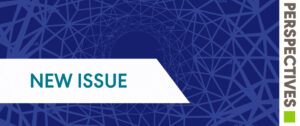At this year’s ASHA Convention, you’ll find hundreds of poster presentations highlighting new and exciting innovations. If you can’t make it to Seattle this year, you can still turn to the ASHA Journals to find the latest developments in the sciences.
This year, ASHA selected 61 poster presentations to be Meritorious Posters, a distinction that highlights those researchers who are showcasing extraordinary, exceptional, and innovative work. Many of these same researchers are also frequent contributors to ASHA’s journals, and we’re celebrating their achievements by highlighting their recent work below. Read on to discover the latest on telepractice, aphasia, and more from these renowned authors.
Leading Research in Telepractice
Telehealth Across the Therapies: Examining the Impact of the COVID-19 Pandemic on Clinical Staff Working With Low Socioeconomic Status Populations: The shift to telepractice during the COVID-19 pandemic affected pediatric health care clinicians differently, including those who provide services to low-socioeconomic-status individuals. Author William Bolden III and his colleagues, whose award-winning research focuses on oral language interventions via telepractice, will present at the ASHA Convention.
Extending Complexity to Word-Final Position via Telepractice: Intervention Effects for English-Speaking Children With Speech Sound Disorder: The authors of this LSHSS study found that phonologically complex targets are feasible and effective targets for English-speaking children with speech sound disorders—even when those treatments are delivered via telepractice. Authors Irina Potapova and colleagues have also authored a 2024 Meritorious Poster on consonant clusters in speech sound intervention.
Online Aphasia Groups: Navigating Issues of Voice and Identity: This AJSLP article can help you manage conversations in online aphasia groups, which can provide participants with increased communication and reduced social isolation. Coauthors Jamie H. Azios and Brent Archer contributed to an award-winning poster on a similar topic—aphasia and friendship.
More Articles From Acclaimed Researchers
Looking Upstream to Understand Race/Ethnicity as a Moderator for Poststroke Neuroinflammation and a Social Determinant for Poststroke Aphasia Outcomes: Understanding racial and ethnic differences in cognitive impairment and aphasia after a stroke can help you provide more culturally responsive care. AJSLP authors Elizabeth Evans and Charles Ellis also worked on a poster looking at health care access and utilization in people who are deaf and hard of hearing.
Velopharyngeal Gap Size During Sustained Vowel Production Correlates With Perceptual Ratings of Hypernasality in Connected Speech: The authors of this JSLHR article studied a novel way to adequately characterize velopharyngeal gap size, using sustained vowel production elicited using magnetic resonance imaging (MRI). If you’d like to know more, you can check out the Meritorious Poster on the same topic from lead author Jessica L. Williams and her four co-authors of this article.
Exploring Online Communication in Self-Identified Autistic Adolescents: Autistic youths display consistent gendered language use patterns both in face-to-face and online communication. Co-author Allison Bean’s Meritorious Poster further examines communication in school-aged children with autism.
Bringing Top Researchers to You
ASHA’s journals bring research from these and other researchers to your phone, computer, or other devices. Wherever you plan to be this December, you can access the latest research through your ASHA membership on ASHAWire, our one-stop, state-of-the-art publishing platform bringing you content from across all of our journals.
ASHA Journals provides the latest research breakthroughs alongside clinically relevant work that you can use at your job. Stay tuned for next month’s Context blog post, when we announce some of our most-read articles of the year—showing what your colleagues are reading across the many topics that we cover at ASHA Journals.







